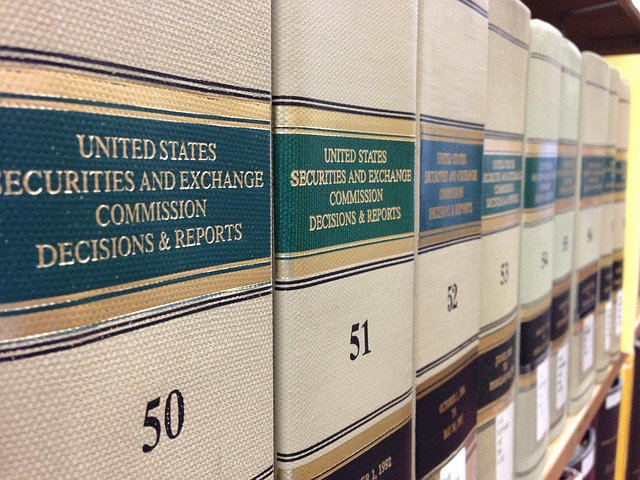Financial fraud, including identity theft and investment scams, remains a significant challenge within the financial services industry. Early detection relies on understanding fraudulent schemes, as evidenced by case studies in Financial Services Regulatory Litigation. These reveal that fraud is uncovered through transaction pattern analysis, alert systems for unusual activities, and data cross-referencing. Recognizing red flags like spending spikes or failed login attempts is crucial for client protection. The financial industry's response has evolved with stringent regulatory frameworks and advanced analytics, leading to successful prosecutions in Financial Services Regulatory Litigation. Technologies like Artificial Intelligence (AI) and Machine Learning (ML) are revolutionizing fraud detection, enabling swift identification of intricate schemes and protecting businesses, communities, and the economy from potential harm.
Financial fraud remains a significant challenge for the financial sector, with ever-evolving schemes posing risks to institutions and individuals alike. This article explores the complex landscape of financial fraud detection, delving into common fraudulent activities and regulatory responses worldwide. We examine legal frameworks and case studies involving financial services regulatory litigation, highlighting their impact on deterrence. Additionally, we turn our attention to advanced technologies, particularly Artificial Intelligence (AI) and Machine Learning, as transformative tools in identifying and mitigating fraudulent activities.
- Understanding Financial Fraud: Common Schemes and Red Flags
- Regulatory Response: Legal Frameworks and Case Studies
- Advanced Technologies in Fraud Detection: A Look at AI and Machine Learning
Understanding Financial Fraud: Common Schemes and Red Flags

Financial fraud is a complex and ever-evolving challenge within the financial services industry. Understanding common fraudulent schemes is essential for early detection and prevention. One of the most prevalent types involves identity theft, where criminals steal personal information to impersonate individuals and gain unauthorized access to their accounts. Another scheme, investment scams, preys on investors’ trust by promising high returns on false or exaggerated investments. These cases often involve sophisticated marketing strategies and complex structures designed to mislead unsuspecting victims.
Case studies in financial services regulatory litigation highlight the impact of these schemes. For instance, many instances of fraud are uncovered through meticulous scrutiny of transaction patterns, unusual activity alerts, and cross-referencing data across various databases. Red flags may include sudden spikes in spending, unexpected account closures, or multiple failed login attempts—indicating potential unauthorized access. Recognizing these signs is crucial for respective business entities to protect their clients from financial loss. While general criminal defense strategies may be applicable, specialized knowledge of financial regulations and fraud detection techniques is often required to navigate the complexities of such cases.
Regulatory Response: Legal Frameworks and Case Studies

The financial industry’s response to fraud has significantly evolved over the years, driven by regulatory bodies worldwide implementing stringent legal frameworks. These regulations serve as a double-edged sword, aiming to deter fraudulent activities while empowering regulators to investigate and prosecute offenders. One notable example is the increased emphasis on transparency and reporting, where institutions are mandated to disclose potential red flags and suspicious transactions. This shift has led to numerous case studies in financial services regulatory litigation, showcasing an unprecedented track record of successful prosecutions.
These case studies reveal a strategic approach where regulators utilize advanced analytics and data-driven insights to identify patterns indicative of fraud. By collaborating with law enforcement agencies, they have successfully brought to justice individuals and networks involved in complex schemes, such as money laundering and insider trading. The impact lies in the message sent—that financial crimes will no longer go unpunished. This proactive stance, coupled with a robust general criminal defense strategy, ensures that those who exploit the system face severe consequences, deterring potential future offenders.
Advanced Technologies in Fraud Detection: A Look at AI and Machine Learning

Advanced technologies like Artificial Intelligence (AI) and Machine Learning (ML) are transforming financial fraud detection, offering unprecedented accuracy and efficiency. These tools can analyze vast datasets—from transaction patterns to behavioral anomalies—at speeds far surpassing human capabilities. Case studies in Financial Services Regulatory Litigation highlight successful deployments of AI/ML models that have detected intricate schemes, from money laundering to insurance claim fraud.
By leveraging machine learning algorithms, financial institutions are identifying suspicious activities more swiftly and accurately, enabling them to alert authorities and protect both respective businesses and the philanthropic and political communities from potential harm. The ability to achieve extraordinary results in fraud prevention is not only a boon for the industry but also ensures a safer, more transparent economic landscape.
Financial fraud, a pervasive global issue, demands an evolving approach. By understanding common schemes, leveraging advanced technologies like AI and ML, and studying regulatory responses through case studies in financial services litigation, we can fortify defenses against ever-adaptable fraudulent practices. Integrating these strategies is crucial for maintaining the integrity of financial systems and protecting individuals from economic harm.






